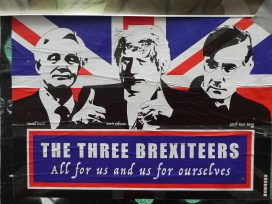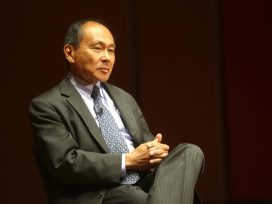Do participants in the Occupy movement see themselves as part of a unified collective, or as, the leadership of an oppressed socio-political group or class? Or is it a movement that unites diverse political identities in the pursuit of broad common values? This essay is an attempt to answer these questions, and to reflect on the different ways in which UK Occupy participants understand themselves. Jodi Dean has written that:
Now we appear to ourselves – we say “we”, even as we argue over who we are and what we want […] Because of Occupy Wall Street, we have been able to imagine and enact a new subject that is collective, engaged, if, perhaps, also manic and distractible.
One of my aims in the research that informs this essay has been to establish the degree to which activists’ own assessments of the movement conform to Jodi Dean’s view. But I have also found that the political and strategic approach of social movements is not always the result of participants’ considered political understandings, and a second aim therefore has been to look at some of the internal movement dynamics and broader contextual factors that help produce an “Occupy politics” – a politics that it is possible that few individual members would consciously embrace.

Occupy London, May 2012 street protest. Photo: Darren Johnson / iDJ Photography. Source:Flickr
Clearly, Occupy did establish a repertoire of recognisable slogans and practices. For example it came to be identified with a set of distinct organizing practices and slogans, including hand gestures, general assemblies, consensus decision-making and references to “the 99%”. (Much of this was drawn from preceding decades of social movement struggle, particularly the radical environmental, global justice and social forum movements of the late twentieth and early twenty-first centuries.) The adoption of this repertoire by protesters around the world seemed to show that a unified political identity was being created. But Occupy’s message was less clear. Its refusal (or inability) to articulate a single set of movement demands has made it difficult to precisely analyse its politics. In some ways it presented something of a blank canvas, onto which assorted supporters and critics could paint whatever they wanted to see.
Writers from a libertarian or anarchist perspective have enthusiastically claimed Occupy for their tradition. The movement’s focus on democracy is portrayed as a disavowal of a unified ideology or collective subject: participants are empowered to produce their own critique of capitalism in line with their particular political identities. The determination to create “utopian” or “liberated” spaces, the commitment to “horizontal” methods of organizing, and the resolute refusal to engage with established power structures, mean that a line can be drawn that links Occupy to 1960s libertarianism, the anti-nuclear movement, radical environmentalism and the alter-globalisation movement. The “open source”, flexible nature of the Occupy message, and the movement’s networked form, are seen as strengths which have allowed Occupy to translate itself into different contexts around the world. The central concept within this discursive framework is “participatory democracy”, represented by the Occupy “general assembly” and its consensus decision-making processes. The lack of a single set of Occupy “demands” and the movement’s commitment to self-representation are also celebrated by the libertarian school.
An alternative account frames Occupy as a failed revolutionary movement. According to this line of argument, the strategy of occupation should be seen as a militant assertion of popular power in opposition to global capital, rather than an attempt to establish temporary autonomous zones. The concept of “the 99%” against a tiny global elite has successfully drawn attention to the inequality and class division upon which capitalism depends. As Jodi Dean has written, it “transform[ed] a statistic into a crime’ (CH, 218). This account casts Occupy activists as a reluctant vanguard, able to mobilise millions but unwilling to embrace the leadership role this implies; the failure to develop a programme and create permanent institutional forms have been seen as fatal weaknesses (CH, 229-32, 237-9). The preoccupation with consensus and horizontalism – praised within the libertarian discourse as important exercises in liberation – are criticised by the revolutionaries as evidence of self-indulgence and irresponsibility. Occupy’s marxist “supporters” thus tend to damn Occupy with faint praise. The movement is depicted as having achieved its successes despite, rather than because of, the libertarian impulses of its key activists and thinkers.
Writers from both perspectives appear to agree that we can identify a distinctive Occupy politics. For anarchists and libertarians, this politics is strongly influenced by what Richard Day calls the “newest social movements”: the radical environmental and global justice groups that have appeared since the mid-1990s. It is generally taken to include: a commitment to “horizontal” democracy and consensus; an opposition to engagement with the state; a celebration of inclusion and diversity; an ambivalence on questions of ideology; and a preference for concrete action over long-term strategy. For others, in contrast, there is a clear difference between Occupy and the movements of the 1990s and 2000s; and this is seen in Occupy’s invocation of class-based notions of collective identity (“the 99%”) and preference for militant tactics.
Collective subjectivity in radical social movements
Jodi Dean praises Occupy for creating something that she believes the left had previously lacked – a collective political subject. The global justice movement of the late 1990s and early 2000s had described itself as a “movement of movements”, a coalition of diverse political identities brought together by a broad commitment to “social justice”. Occupy, on the other hand, seemed able to unite protesters across the world around a set of militant slogans and tactics. A new collective political identity appeared to have been formed.
In celebrating this apparently unified identity, Dean was engaging with a longstanding debate about whether or not the changes associated with late capitalism had in fact made unity among radical movements impossible and undesirable. Wendy Brown, for example, discussing the causes of what she described (borrowing from Walter Benjamin) as “left melancholy”, had accused contemporary radicals of fetishizing a form of analysis that presupposed a unified collective subject. She argued that instead of attempting to come to terms with the fragmentation of identities under postmodernism, leftists had developed a narcissistic attachment to concepts, slogans and models of analysis that were becoming increasingly anachronistic and irrelevant. This failure to adapt to a changed social and cultural context meant the left had rendered itself “a conservative force in history”.
Just as Brown was writing, the emerging global justice and social forum movements seemed to have heeded her advice. They were characterised by an emphasis on autonomy and diversity; solidarity was reconceived as respect for difference, and attempts to create a unified ideology and strategic approach were abandoned. Activists openly embraced the movement’s political and social heterogeneity. Donatella Della Porta coined the phrases “tolerant identities” and “multiple belongings” to express the practice of positively welcoming dialogue and engagement with those from different backgrounds and perspectives, while resisting the imposition upon the movement of any one overarching aim or conception of the good society. A commitment to “social justice” was the “adhesive” which bound activists from disparate perspectives and backgrounds together (“MB”).
But it is precisely this rejection of the notion of a single collective subject that Dean criticises. Inverting Brown’s interpretation of Benjamin, she argues that the left’s “melancholy” stems rather from the suppression of its revolutionary desires and betrayal of the cause of the “proletariat”. She applauds Occupy for resurrecting the revolutionary subject and leaving behind the “micro” politics of the last twenty years. She hopes that the remarkable growth of the Occupy movement is reflective of a growing awareness that the deliberate class war waged by the rich requires an equally unified response. The movement’s name, slogans and tactics invoke the image of a united people asserting its power (CH, chapter 5). Is Jodi Dean right to argue that Occupy has “enabled us to imagine and enact” a new collective subject? Or is it more accurate to describe the movement as a continuation of the politics of global justice activism? My research has tried to answer these questions through reflecting on my discussions and interviews with Occupy activists.
Social and political identities
According to earlier social movement theory, the degree of “catnetness” in a movement (cat = category: i.e. the extent to which participants belong to the same social categories; net = network: i.e. the density of group relationships) is a good predictor of the strength of collective identities. Della Porta argues that the global justice movement broke this rule, since it featured plenty of “net” but little “cat”: the movement was characterised by dense, overlapping networks, but few shared social or political characteristics. Her phrase “tolerant identities” is designed to express the idea that participants felt a strong sense of shared collective identity alongside a positive respect for the movement’s diversity (“MB”). But my research did not confirm this idea: while the activists I interviewed could be said to have shared a broad political identity, this did not seem to produce a strong sense of belonging to the movement. Several distinguished sharply between their own politics and that of the movement as a whole.
Dean’s notion of collective subjectivity tends to conflate social and political identities: she discusses the unity of “the Left” at times, and the unity of “the people” at others. But these are quite different things: in my own research I have made a distinction between social and political identities. “The people” have shared interests, while “the Left” have shared goals. Of course, from certain marxist perspectives these two forms of unity are closely interlinked: the identification of common class interests can lead to the development of revolutionary class consciousness, and conversely the promotion of a revolutionary analysis can raise awareness of shared interests. However, it is equally clear that a sense of common social group membership does not necessarily give rise to a particular form of political analysis. Similarly, a commitment to revolutionary goals does not always imply identification as part of a particular social class or group. As Della Porta found, participants in the newest social movements expressed a shared movement identity based on ethical and political commitments, not on shared class interests. Any discussion on unity thus needs to be broken down into (at least) two questions: do movement participants consciously embrace a common ideological and strategic orientation and identify as part of a common political tendency or approach?; and do participants see themselves as sharing class or other interests with their fellow activists? I understand identification as part of a common political tendency as shared “political identity”; and a feeling of a shared group membership as “social identity”.
In my discussions with Occupy activists I found a number of different understandings of who constituted the “we” of radical social movements, and how that collective identity should be defined. Some activists felt that movements should adopt a clearly “leftwing” political identity. Others argued that they should project themselves as being representative of “informed”, “sensible”, “mainstream” opinion. These views, although in some ways opposed, each frame identity in terms of political rather than social position. Thus one activist I asked to describe the “we” of the global justice movement listed the social components of the movement as “diverse interest groups to do with gender, race, class, the trade unions, environment”, but ultimately ascribed to them a political identity: “what they all have in common is their critique of capitalism”. Few participants drew clearly on socially-rooted identities in their discussions, though the activist who made frequent references to “the class” and argued that movements should engage in “political class struggle” was certainly an exception.
Activists tended to define themselves primarily in terms of their politics rather than any social identity. “Identity” – on the rare occasions when the concept came up – was discussed largely in relation to personal autonomy, rather than group belonging. Many respondents referred to being a “revolutionary”, “an activist” or someone on “the left” as an identity in itself. One comment on the make-up of Occupy makes this clear: “some were anti-capitalists, some were social workers, some were artists”.
Discussions of “solidarity” (the term that came up in discussion most frequently) reflected the ambiguous nature of “identity” in activists’ discourses. As one activist argued:
Whether you approve of someone wholly or not, if someone puts themselves in jeopardy they deserve your solidarity. Otherwise the obvious consequence […] is to make it much more difficult for people to step forwards.
Here, solidarity is interpreted as support for allies whose identity one does not share, rather than as an awareness of shared interests based on social position.
The Occupy participants I interviewed came from significantly diverse political and social backgrounds. But almost all of them generally referred to themselves through political or ideological categories such as “revolutionary” or “left”, rather than through social identities. Most seemed to view themselves as thinkers or analysts, rather than as people whose politics emerged from their social identities and grievances. (Another rare exception was an activist who drew substantially upon her own experiences and social identity as a “pissed off woman” in attempting to explain her politics.) But in spite of this tendency to discuss their own identities with reference to political rather than social categories, many nevertheless felt that the left more widely had suffered precisely because activist political identities did not seem to be rooted in social identity and experience. For example, one respondent felt that the politics expressed by working-class teenagers at an event she had attended was more authentic and intense than the views articulated by seasoned leftwing activists, and another bemoaned the fact that many “revolutionaries” were not active in “grassroots struggle”, and argued that we should all entrench ourselves in “a community that resonates with us in some way”.
This points to an awareness of the differences between social and political identities. Della Porta argues that global justice activists’ commitment to “social justice” might be able to perform a similar “adhesive” function to the “class conscious” identity that sustained the labour movements of the past (“MB”, 200). But a preference for social justice and membership of a particular class constitute two very different bases for the formation of collective identity. Solidarity among people who feel they have common interests may be a stronger “adhesive” than solidarity between those who merely share the same political outlook. Perhaps this thought motivated one activist’s attack on Occupy for “lacking an understanding that our liberation, the liberation of Tamils, the liberation of women, depends on the liberation of humanity”.
Inclusion versus agonism
Della Porta highlights inclusivity as a key feature of the global justice movement, and sees the inclusion of a range of social and political identities within the umbrella of “social justice” as enabling a strong sense of belonging (“MB”, 200). Dean, on the other hand, identifies the inclusivity of the left as its greatest weakness. She argues that contemporary radical movements have failed to sufficiently highlight division or identify social antagonisms, and this has produced a politics of “inclusion” that reflects liberal fantasies about the common good. My findings partly substantiate these claims.
Activists were generally united in seeing Occupy as providing inclusive spaces that could be accessed by people with a range of views, identities and political perspectives. Several thought an important benefit of this inclusivity was that it allowed Occupy to widen out to a much broader audience as well as bringing in people traditionally on the left, and that this enabled a productive exchange between the left and ordinary people: “diverse people from diverse backgrounds that didn’t have specific analyses came together, and it created space for common sense to take place”. Although the inclusion of a range of views within Occupy was seen as creating some problems in relation to the clarity of the political analysis, message and demands, this was generally seen as unavoidable, or as being outweighed by other benefits: “if you’re going to call yourselves the 99%, then that has to include people who maybe want a different version of capitalism and maybe they’re Liberal Democrats or they’re Greens”.
Others argued that attempting to include such a broad range of views caused Occupy to accommodate itself too much to mainstream, conservative political discourses:
I would have liked it to become an actual radical movement. It would have appealed to many more people, if instead of trying to appeal to the right wing as well, as many of the spokespeople did, it first and foremost tried to appeal to its natural allies who have been excluded and exploited all their lives […] But by trying to be so bland and so inclusive, it actually excluded the people it would have naturally attracted.
The implication here is that, in a society characterised by conflict and exclusion, it is impossible for a movement to include all political identities. In this sense, radical movements cannot avoid being divisive. One activist went further, arguing that movements should aim to “completely polarise society in between two hegemonic blocs that are in complete competition with each other”. Others largely accepted that the creation of a common political identity relied upon a division between “us” and “them”: the concept of the 99% versus the 1% was proclaimed as one which both divided and united. Most, however, were reluctant to assign a specific identity to the 1%, preferring to conceptualise it as either a systemic enemy or a generic entity which could take on different forms in different contexts. One participant felt that part of the reason that the 1% were not clearly defined was the difficulty of producing consensus on this from among the diverse groups and individuals who made up Occupy London. This could be understood to mean that it was the lack of a strong social or political collective identity among Occupy participants that was responsible for producing a rather abstract message.
There was a general reluctance to specify the social groups that constituted either friend or enemy.
“The 99%” was widely seen as an appropriate term for the collective subject, but few seemed prepared to provide detail on the groups through which this was constituted, or on the 1% to be opposed. Inclusion and exclusion were discussed largely with reference to political views, rather than to specific social groups. Many seemed to view Occupy’s base as made up of all those ideologically opposed to neoliberal capitalism (including, in some understandings but not others, Greens and some Liberal Democrats). Others felt that Occupy should have had a more narrowly-defined ideological character, but the question of inclusion or exclusion was seen largely to depend on views rather than interests. This highlights once more the attribution of a purely political identity to the Occupy movement – a fundamental difference with some social movements of the past.
One consequence of failing to specify the groups to be included or excluded is that proposals for change can become rather abstract and vague. The best example of this was the proposed demand “don’t be mean”, which is strikingly similar to Google’s motto “don’t be evil”. Such attempts to produce an inclusive message risk the obscuring of social division and the production of incoherent politics. Including everyone might be an important utopian goal, but in the present context, where social division is the most evident feature of our reality, a collective identity that includes everyone makes no sense. Dean argues that a revolutionary movement should advocate the interests of the people as “the rest of us” (CH, 87). This is an attempt to incorporate an aspirational, utopian, universal identity (“the people”) alongside an identity with the oppressed, exploited and excluded (“the rest of us”). The creation of a coherent political identity requires the prior acknowledgement of fundamental social division: the universal identity sought cannot be a reality in the present society.
The politics of Occupy
Both supporters and critics of Occupy seem generally to accept that conscious individual actors make deliberate decisions to adopt the movement’s politics. Enthusiasts such as David Graeber commend activists for their embrace of horizontal democracy, while more cynical voices like Dean attack Occupy members’ supposed rejection of the notions of “leadership” and “party”. Even Della Porta’s detailed empirical account of global justice activists’ political understandings assumes that participants deliberately and consciously commit to a “world of differences” (“MB”). Such assumptions produce a somewhat caricatured picture of Occupy politics – one that obscures contradiction and nuance. Only a small minority of the activists I interviewed embraced “the politics of Occupy” as outlined by both critics and supporters. If this politics is taken to include a commitment to “horizontal” democracy and consensus, an opposition to engagement with the state, a celebration of inclusion and diversity, an ambivalence on questions of ideology and a preference for concrete action over long-term strategy, perhaps only one of them could be said to fit the model. Those whose politics departed significantly from this picture include an activist who organised Occupy demonstrations in Scotland, one who helped draft the initial London statement and others who enthusiastically participated in Occupy actions. Although all the activists I interviewed identified with Occupy (either currently or in the past), half of them expressed significant criticisms of the movement. Whereas Della Porta’s research on global justice activists revealed a strong degree of unity despite political differences, my own findings indicate a relatively divided movement.
Unsurprisingly, given that identities are constituted through complex and contradictory social and psychological processes, a number of our activists appeared to articulate a contradictory politics. (And Dean herself also insists that we question the apparent unity of the self and pay attention to the divisions and contradictions within individuals (CH, 225-8)). We should see the politics of social movement activists as attempts to negotiate these contradictions, rather than as carefully formulated ideologies. People’s politics cannot be discussed in isolation: they need to be understood in relation to the historical and social context in which activism takes place.
This is not to deny the existence of a distinctive politics associated with Occupy and other contemporary social movements. My findings did suggest that activists shared some elements of a common political and strategic approach. However, rather than being consciously adopted, this approach often seemed to flow from a set of unarticulated assumptions and beliefs. And these assumptions were in turn related to current social, cultural, ideological and economic trends. To borrow a phrase from one of my interviewees, Occupy in the UK were “a product of the conjuncture”.
The political identity of the Occupy movement can also be seen as the result of the interplay between different groups and individuals, rather than as the product of a common outlook shared by members. For example, one activist suggested that Occupy London adopted an ambiguous position on who exactly constituted “the 1%” partly because there was no agreement on the issue. The failure to specify a common enemy is not, therefore, evidence of the movement’s agreement that everyone should be included; rather, it can be seen as the result of a lack of agreement over who to exclude. The internal dynamics of the Occupy movement could be seen as producing a “politics” that few individual members consciously adopt.
Identities in context
Activists’ notions of identity, inclusion and division must be understood in relation to the economic, cultural and social processes of Western, late capitalist society. Some activists saw identity primarily as a matter of choice, arguing that a goal of social movements should be to allow individuals to “freely choose” their identities. This particular notion of identity can only be understood in relation to the socioeconomic and cultural context in which it is produced. Richard Sennett has noted the tendency of young people in particular to describe their identities as the product of choice rather than as linked to social or occupational position. For him, this phenomenon is related to the “culture of the new capitalism”, which promotes a focus on potential rather than past experience. Dean argues that contemporary capitalism encourages us to identify ourselves in terms of who we want to be, rather than partly as a product of our environment and experience. The result is an individualistic conception of identity that constitutes a barrier to the formation of a collective political subject. If political identities are seen as the product of choice, to modify one’s politics involves a violation of autonomy. This explains some activists’ reluctance to compromise over the fundamentals of their politics, and their tendency to prefer loose coalitions to organisational unity.
Activists’ reluctance to identify the social groups in whose interests Occupy fights is similarly related to a number of contextual factors. Identifying the interests of particular social groups requires what Fredric Jameson calls a “cognitive map”: the ability to conceive of the “unrepresentable totality” of social structures beyond immediate experience. Jameson argues that post-modern culture obscures social reality and prevents us from constructing such a map. And material changes in the nature of capitalism have also affected people’s understanding of social division. Sennett discusses the ways in which new forms of corporate organisation mean that companies appear less like bureaucratic hierarchies and more like flexible networks. Workers in modern organisations consequently develop forms of occupational identity that rely less on a distinction between workers and bosses than in the past.
Activists’ enthusiastic embrace of the “99%” slogan nevertheless implies a desire to identify as part of a collective socio-political subject. Indeed, the creation of the concept of the “99%” can be seen as an attempt to provide one element of a cognitive map that might allow people with diverse and fragmented identities to see their common interests. This is precisely the function Jameson assigns to critical analysis: to enable people to look “beyond the camera obscura” (in the words of one activist) and see a different interpretation of the world. Such an analysis can only be constructed through an interaction between radical ideas and popular understandings, however. For Dean to insist that movements espouse “communism” or encourage identification as part of the “proletariat” is to ignore the fact that political identities and understandings are not manufactured artificially, but developed organically.
Perhaps one lesson that emerges from my research is that a better understanding of social movements is likely to emerge from models that make connections between general theory and individual experience, and that seek to faithfully reflect and make sense of the internal complexities and contradictions within both social movements and individual participants.







